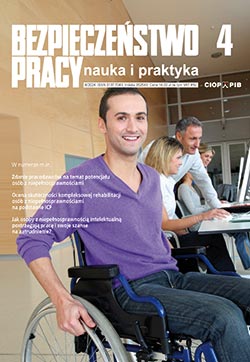Assessment of the acoustic quality of educational rooms – objective acoustic parameters
dr inż. JAN RADOSZ
Acoustic quality is a general term used to describe the acoustic properties of an object contributing to a subjective, positive human impression. It is particularly important in educational rooms, where both teachers and students should be provided – taking into account their age – appropriate conditions for the transmission of verbal content. Acoustic quality is closely related to noise. Noise in educational facilities is one of the most common physical factors, and it can negatively affect the health of students and teachers. Noise levels in educational facilities are generally not harmful to hearing, but the impact of noise is not limited to the hearing. Long-term exposure to noise can cause irritability, hinder concentration and lead to physical fatigue. The article presents objective acoustic parameters in the context of the requirements and recommendations for ensuring good acoustic quality of educational rooms.
DOI: 10.54215/BP.2022.06.14.Radosz
Ultrasonic haptic technique – operation, applications, hazards
dr inż. LESZEK MORZYŃSKI ,inż. ADAM SWIDZIŃSKI ,ALIAKSANDRA SHMYK
The ultrasonic haptic technique is a new, commercially available technique that allows the creation of invisible objects in the air above the haptic device, which can be sensed by the sense of touch. In this technique, a concentrated and appropriately modulated ultrasound beam causes vibrations of the human skin, thus stimulating the mechanoreceptors located in it and causing a feeling of touch. The technique has many potential applications, ranging from enriching virtual reality through control interfaces to aids for people with visual disabilities. On the other hand, this technique, due to the use of ultrasound with high sound pressure levels, may become a source of potential hazards to its user. The article discusses the principle of operation of the ultrasonic haptic technique, its possible applications and currently commercially available ultrasonic haptic devices. The paper also presents the results of a preliminary assessment of ultrasonic noise hazard caused by the ultrasonic haptic technique based on the ultrasonic noise measurements carried out for one of the described devices.
DOI: 10.54215/BP.2022.06.15.Morzynski
Knowledge base on personal protective equipment: structure, verification and development prospects
dr hab. inż. KATARZYNA MAJCHRZYCKA ,dr MAŁGORZATA OKRASA
The article presents basic information on the Internet knowledge base on personal protective equipment. It includes thematic modules, i.e. Construction, Agriculture, Healthcare, Mining, Personal Protective Equipment, Legal Regulations, and a Training module in the form of a PowerPoint presentation package and interactive knowledge tests relating to specific issues. As an example of the content contained in one of the knowledge base modules, selected problems related to respiratory protective equipment were discussed. In order to evaluate the functionality of the database and to set directions for its improvement, an online survey was carried out using the Google form. The analysis of the results confirmed that an online knowledge base on personal protective equipment is needed.
DOI: 10.54215/BP.2022.06.16.Majchrzycka




























